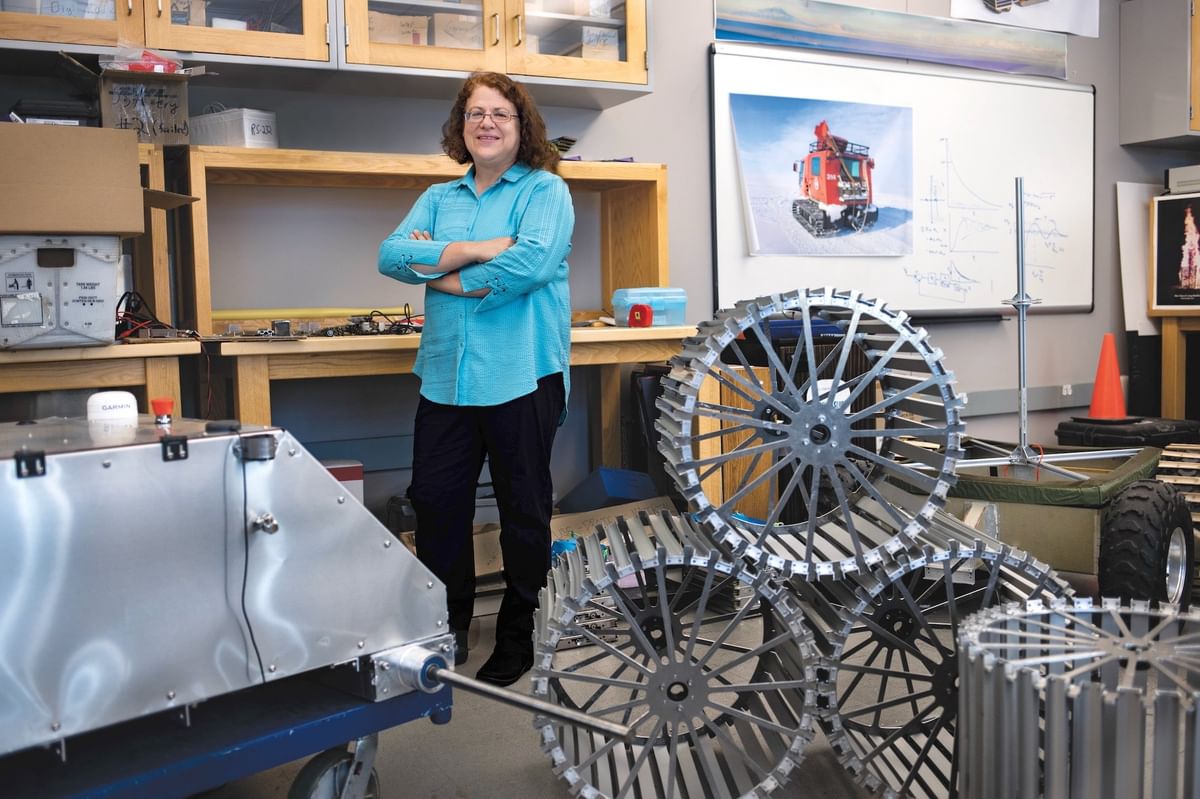- Undergraduate
Bachelor's Degrees
Bachelor of ArtsBachelor of EngineeringDual-Degree ProgramUndergraduate AdmissionsUndergraduate Experience
- Graduate
Graduate Experience
- Research
- Entrepreneurship
- Community
- About
-
Search
All Thayer News

Building Robot Superheroes
Apr 15, 2021 | by Brian Drisdelle '21 | Dartmouth Admissions' 3D Magazine
Hand-built in Hanover to tackle Antarctica, the moon, and Mars, the award-winning robots and autonomous systems engineered by Professor Laura Ray and her students are designed to take on notoriously dangerous and inhospitable environments.

Professor Laura Ray (Photo by Don Hamerman/3D Magazine)
"You're not going to send a tractor to the moon," jokes Professor Ray, "but maybe you can take modular vehicles, little building blocks, and create something that has much more capability." She's referencing a design created by her students dubbed SHREWs—Strategic Highly-Compliant Roving Explorers of Other Worlds—after the mouselike animals that latch onto one another's tails. The group has recently been named a finalist in NASA's BIG Idea Challenge for the innovation. Professor Ray has been there before; in 2019, she mentored the Dartmouth group that won the competition with their Mars greenhouse system, DEMETER, bringing the trophy home to Hanover for the first time.
Back on Earth, Professor Ray creates robots that are actively deployed in Greenland and Antarctica, most notably to tow radar systems over the precariously fragile zones of moving ice sheets. Previously, this analysis was done by heavy trucks that could only pass over the area once owing to safety concerns, but an autonomous, solar-powered robot designed by Professor Ray and her students eliminated this risk entirely. Dubbed Yeti, it enabled the first such survey of its kind. "We could see the whole length of crevasses—how far they extended, whether the ones on the top matched the ones on the bottom—through the whole 200-meter thickness of ice." As part of this endeavor, she has dispatched undergraduates to Greenland to monitor the robots' operations. "Altogether, it has this element of the outdoors, the robots are fun to work with, and the science is really interesting," she explains. "This kind of work really gets students excited."
On campus, Professor Ray teaches control theory and mechatronics classes. She cites her favorite part of the job as creating hands-on labs and design challenges "where that lightbulb can go off." She emphasizes the flexibility of Thayer's educational model. "Our engineers get to do everything that any other student does—take a language, study abroad, or pursue a minor." She also stresses that students aren't married to a particular field when they walk in the door, pointing out that Thayer classes and the human-centered design minor are open to all undergraduates.
Through all her projects and robotic endeavors, Professor Ray points to Dartmouth's unique systems-thinking approach as the biggest difference-maker in the field. "Instead of asking, 'What should I do next?' the Thayer engineer comes back and says, 'I'm done—and here's what we should do next.' That's what distinguishes the Thayer engineering program."
Link to source:
https://issuu.com/dartmouthadmissions/docs/3d_april_2021_issuu_/48?fr=sYTNmMzM0MzgxOTk
For contacts and other media information visit our Media Resources page.
